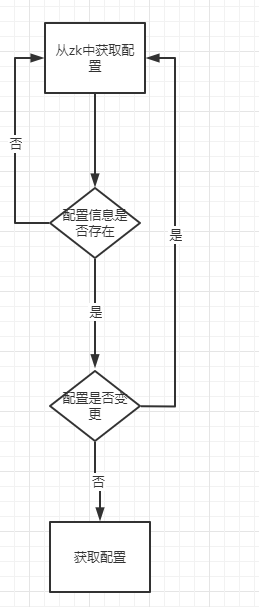DelayQueue延遲隊列原理剖析
- 2021 年 6 月 7 日
- 筆記
DelayQueue延遲隊列原理剖析
介紹
DelayQueue隊列是一個延遲隊列,DelayQueue中存放的元素必須實現Delayed接口的元素,實現接口後相當於是每個元素都有個過期時間,當隊列進行take獲取元素時,先要判斷元素有沒有過期,只有過期的元素才能出隊操作,沒有過期的隊列需要等待剩餘過期時間才能進行出隊操作。
源碼分析
DelayQueue隊列內部使用了PriorityQueue優先隊列來進行存放數據,它採用的是二叉堆進行的優先隊列,使用ReentrantLock鎖來控制線程同步,由於內部元素是採用的PriorityQueue來進行存放數據,所以Delayed接口實現了Comparable接口,用於比較來控制優先級,如下代碼所示:
1public interface Delayed extends Comparable<Delayed> {
2
3 /**
4 * Returns the remaining delay associated with this object, in the
5 * given time unit.
6 *
7 * @param unit the time unit
8 * @return the remaining delay; zero or negative values indicate
9 * that the delay has already elapsed
10 */
11 long getDelay(TimeUnit unit);
12}
DelayQueue的成員變量如下所示:
1// 鎖。
2private final transient ReentrantLock lock = new ReentrantLock();
3// 優先隊列。
4private final PriorityQueue<E> q = new PriorityQueue<E>();
5
6/**
7 * Leader-Follower的變種。
8 * Thread designated to wait for the element at the head of
9 * the queue. This variant of the Leader-Follower pattern
10 * (//www.cs.wustl.edu/~schmidt/POSA/POSA2/) serves to
11 * minimize unnecessary timed waiting. When a thread becomes
12 * the leader, it waits only for the next delay to elapse, but
13 * other threads await indefinitely. The leader thread must
14 * signal some other thread before returning from take() or
15 * poll(...), unless some other thread becomes leader in the
16 * interim. Whenever the head of the queue is replaced with
17 * an element with an earlier expiration time, the leader
18 * field is invalidated by being reset to null, and some
19 * waiting thread, but not necessarily the current leader, is
20 * signalled. So waiting threads must be prepared to acquire
21 * and lose leadership while waiting.
22 */
23private Thread leader = null;
24
25/**
26 * Condition signalled when a newer element becomes available
27 * at the head of the queue or a new thread may need to
28 * become leader.
29 */
30// 條件,代表如果有數據則通知Follower線程,喚醒線程處理隊列內容。
31private final Condition available = lock.newCondition();
Leader-Follower模式的變種,用於最小化不必要的定時等待,當一個線程被選擇為Leader時,它會等待延遲過去執行代碼邏輯,而其他線程則需要無限期等待,在從take或poll返回之前,每當隊列的頭部被替換為具有更早到期時間的元素時,leader字段將通過重置為空而無效,Leader線程必須向其中一個Follower線程發出信號,被喚醒的 follwer 線程被設置為新的Leader 線程。
offer操作
1public boolean offer(E e) {
2 // 獲取到鎖
3 final ReentrantLock lock = this.lock;
4 lock.lock();
5 try {
6 // 將元素存儲到PriorityQueue優先隊列中
7 q.offer(e);
8 // 如果第一個元素是當前元素,說明之前隊列中為空,則先將Leader設置為空,通知等待線程可以爭搶Leader了。
9 if (q.peek() == e) {
10 leader = null;
11 available.signal();
12 }
13 // 返回成功
14 return true;
15 } finally {
16 lock.unlock();
17 }
18}
offer操作前先進行獲取鎖的操作,也就是同一時間內只能有一個線程可以入隊操作。
- 獲取到ReentrantLock鎖對象。
- 將元素添加到PriorityQueue優先隊列中
- 如果隊列中最早過期的元素是自己,則說明隊列原先是空的,所以將Leader進行重置,通知Follower線程可以成為Leader線程。
- 最後進行解鎖操作。
put操作
put操作其實就是調用的offer操作來進行添加數據的,以下是源碼信息:
1public void put(E e) {
2 offer(e);
3}
take操作
1public E take() throws InterruptedException {
2 final ReentrantLock lock = this.lock;
3 // 獲取可中斷的鎖。
4 lock.lockInterruptibly();
5 try {
6 // 循環獲取數據。
7 for (;;) {
8 // 獲取最早過期的元素,但是不彈出對象。
9 E first = q.peek();
10 // 如果最早過期的元素為空,說明隊列為空,則線程直接進入無限期等待,並且讓出鎖。
11 if (first == null)
12 // 當前線程無限期等待,直到被喚醒,並且讓出鎖對象。
13 available.await();
14 else {
15 // 獲取最早過期的元素剩餘過期時間。
16 long delay = first.getDelay(NANOSECONDS);
17 // 如果剩餘過期時間小於0,則說明已經過期,反之還沒有過期。
18 if (delay <= 0)
19 // 如果已經過期直接獲取最早過期的元素,並返回。
20 return q.poll();
21 // 如果剩餘過期日期大於0,則會進入到這裡。
22 // 將剛才獲取的最早過期的元素設置為空。
23 first = null; // don't retain ref while waiting
24 // 如果有線程爭搶的Leader線程,則進行無限期等待。
25 if (leader != null)
26 // 無限期等待並讓出鎖。
27 available.await();
28 else {
29 // 獲取當前線程。
30 Thread thisThread = Thread.currentThread();
31 // 設置當前線程變為Leader線程。
32 leader = thisThread;
33 try {
34 // 等待剩餘等待時間。
35 available.awaitNanos(delay);
36 } finally {
37 // 將Leader設置為null。
38 if (leader == thisThread)
39 leader = null;
40 }
41 }
42 }
43 }
44 } finally {
45 // 如果隊列不為空,並且沒有Leader則通知等待線程可以成為Leader。
46 if (leader == null && q.peek() != null)
47 // 通知等待線程。
48 available.signal();
49 lock.unlock();
50 }
51}
- 當獲取元素時,先獲取到鎖對象。
- 獲取最早過期的元素,但是並不從隊列中彈出元素。
- 最早過期元素是否為空,如果為空則直接讓當前線程無限期等待狀態,並且讓出當前鎖對象。
- 如果最早過期的元素不為空
- 獲取最早過期元素的剩餘過期時間,如果已經過期則直接返回當前元素
- 如果沒有過期,也就是說剩餘時間還存在,則先獲取Leader對象,如果Leader已經有線程在處理,則當前線程進行無限期等待,如果Leader為空,則首先將Leader設置為當前線程,並且讓當前線程等待剩餘時間。
- 最後將Leader線程設置為空
- 如果Leader已經為空,並且隊列有內容則喚醒一個等待的隊列。
poll操作
獲取最早過期的元素,如果隊列頭沒有過期的元素則直接返回null,反之返回過期的元素。
1public E poll() {
2 final ReentrantLock lock = this.lock;
3 lock.lock();
4 try {
5 E first = q.peek();
6 // 如果隊列為空或者隊列最早過期的元素沒有過期,則返回null。
7 if (first == null || first.getDelay(NANOSECONDS) > 0)
8 return null;
9 else
10 // 出隊列操作。
11 return q.poll();
12 } finally {
13 lock.unlock();
14 }
15}
小結
- DelayQueue是一個無界的並發延遲阻塞隊列,隊列中的元素必須實現Delayed接口,相應了需要實現Comparable接口實現比較的方法
- Leader-Follower模式的變種,用於最小化不必要的定時等待,當一個線程被選擇為Leader時,它會等待延遲過去執行代碼邏輯,而其他線程則需要無限期等待,在從take或poll返回之前,每當隊列的頭部被替換為具有更早到期時間的元素時,leader字段將通過重置為空而無效,Leader線程必須向其中一個Follower線程發出信號,被喚醒的 follwer 線程被設置為新的Leader 線程。
喜歡的同學點贊關注下微信公眾號,推送優質文章。


